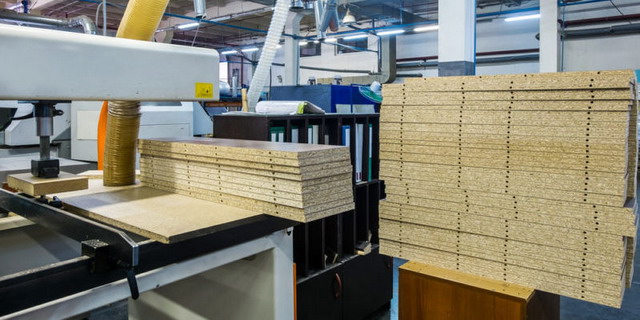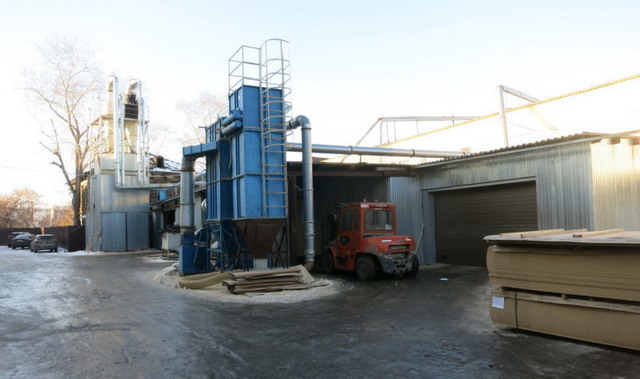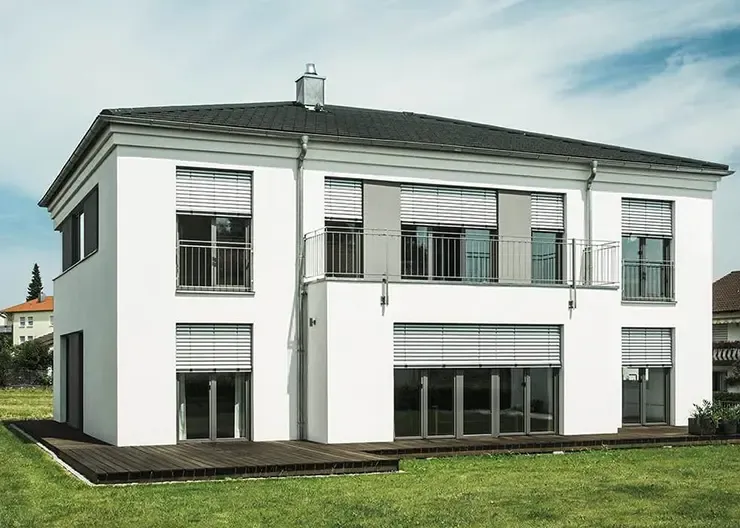How To Make Money in Furniture Production
Last Updated on October 5, 2024 by Mutiara
Furniture manufacturers are focused on sales, while production itself is relegated to the background. Production is not perceived as a source of profit – it only provides goods for trade, where the main economic results of the enterprise’s activities arise. Trade brings in money, while production only absorbs it. But is it possible to make money on production itself? How to increase profits without increasing sales, and receive income even during a recession?
Indignation is already audible: “How so? We only think about production. Just look at our workshops! How much money we have invested, built new premises, bought the best machines, everything is automated. We have assembled a professional team.”
It is very significant that all of the above, in the opinion of many furniture makers, is production. For example, the head of one of the large furniture companies offers such a formula in an interview: “Competent personnel plus highly productive “correct” equipment equals efficient production.”
If such a formula for efficient production worked, then there would be no questions: “Why don’t our investments bring the desired profit? Why, despite high-speed machines and modern programs, can’t we reduce production times? Why is the quality not up to par? Why does a competitor who is technically equipped in approximately the same way earn more?”
It is important to understand that the hardware and people will not line up into a rhythmically working production by themselves. It is like in an orchestra – if you seat the musicians differently, select the notes and make them play without a conductor, then instead of magical music we will hear a discordant discord. Because an orchestra is not only instruments and musicians.
So production is not only about machines and personnel. Rhythm is also important for production, balance and synchronization are important, which are ensured by proper organization, planning and management.
But many managers use only two levers – “machines” and “personnel”. The principle of operation is extremely simple. In the market, growth – both levers forward, decline – both levers back. There is money for investment, instead of manual labor – machines, no money – vice versa.
Few people realize that there is a third lever. This lever is the organization of processes, which allows for faster, better, and more efficient production using existing equipment and the same personnel.
To be able to use this third lever, you need special knowledge. But where to get it? Until recently, certified specialists in organizing modern production were not trained. Perhaps someone will remember the course “Organization and Planning of Production” taught in Soviet universities, but it only gave the basics and is hopelessly outdated today. At furniture conferences and exhibitions, they talk mainly about marketing and sales, about machines and computer programs. Therefore, managers who do not have the appropriate knowledge, when organizing production, have no choice but to rely on intuition and common sense. Some people do it better, some – worse.
It’s a science and it’s been around for over a hundred years
Meanwhile, production management (or operational management) is a whole science that is more than a hundred years old. It arose at the very beginning of the 20th century during the rapid industrialization and is associated primarily with the names of F. Taylor and G. Ford.
Research in the field of optimal organization of production did not leave even Lenin indifferent, who noted that the Taylor system “combines the refined brutality of bourgeois exploitation and a number of the richest scientific achievements in the matter of… developing the most correct methods of work, introducing the best systems of accounting and control, etc.” He recommended identifying the rational elements contained in the Taylor system and creatively using them in Soviet Russia, combining them “…with a reduction in working hours, with the use of new methods of production and organization of labor without any harm to the labor force of the working population.”
Already in the 1920s, Russia began to develop a scientific approach to the organization of production processes. The Central Institute of Labor (CIT) was established, the term NOT ( scientific organization of labor) arose, many publications appeared, conferences were held.
At that time, international contacts with colleagues from the USA and industrial countries of Europe were also actively maintained, which later led to tragedy – the NOT activists were declared enemies of the people and destroyed.
One can imagine the reaction of the authorities in the late 1930s, when the founder of the Central Information Technology Center, Alexey Kapitonovich Gastev, who was in personal correspondence with Henry Ford, wrote in his articles: “Why does a German work better than a Russian? A German who does not know the word “NOT” has something that automatically provides him with a calculated organization of work – a work culture. But our workers still need to be instilled with it. Precisely instilled, not preached. Work culture is not cultivated by agitation, but by training.” And this at the height of the Stakhanovite movement!
It was agitation and propaganda that formed the basis of attempts to revive NOT in the USSR in the post-war period. Numerous NOT organizations were created (NOT councils, NOT teams, etc.), trade unions were involved, teaching was introduced in educational institutions. Competitions and contests were organized, and distinctions were established. The result was a lot of hype and almost no results.
Meanwhile, in countries with market economies, the development of production management did not stop even during the war – breakthroughs in optimization theory, mass service theory, statistics, related to military tasks, later found application for the analysis and improvement of production.
Currently, issues of production optimization in developed countries are being addressed by corporations, leading universities and consulting companies. The study of the optimal batch size in the works of Harris, Wilson and Andler, Shewhart’s statistical quality control methods, Deming’s management principles, the Toyota production system tools, later generalized in the concept of “lean manufacturing”, Little’s law on the volume of work in progress, Goldratt’s theory of constraints of systems, the concept of “six sigma” by Motorola – all this has passed us by and now we have to catch up.
Nowadays, interest in production management is reviving in Russia. Quite recently, we began to train professional managers and organizers of modern production. True, the programs for training new directors are clearly biased towards fashionable courses in leadership, negotiation techniques, team building and other “talent development” and “creative thinking” (pronounced in the American manner). Fundamental knowledge of production management is still not given enough attention.
“Childhood diseases” of furniture production
The furniture industry of the new Russia was almost completely renewed in the early 90s. There was no continuity. The Soviet unwieldy furniture factories and plants, which could only produce but could not sell, with rare exceptions went bankrupt. They were defeated by the so-called “garagers” – small but nimble manufacturers, some of whom have become large industrial companies not today.
The new furniture makers were able to rise quickly due to two factors:
- They knew how to trade. Many came from furniture retail and knew how important it was to quickly respond to demand, be flexible in pricing, etc.
- They did not need to invest much and master complex technologies. Compared to other industries, furniture production is a relatively simple matter.
These two factors of success are firmly entrenched at the subconscious level of the owners and managers of furniture businesses – trade is primary, production is secondary.
Some Russian factories have grown during this time to become large furniture companies, even by world standards. But the main focus is still on trade, while production suffers from many “teething problems” brought with it from the distant garage past.
Without going into details, we will briefly describe only some of these ailments.
Internal logistics
Almost all furniture factories, regardless of their size, show clear signs of multiplication – that is, repeating successful solutions several times. There is not enough productivity – we buy more machines, hire additional people. The edgebanding section lags – we buy another “edging machine” or change it to a faster one. After that, there are blockages in drilling – it means we need to buy another dowel machine. Then we “pull up the cutting” and then again strengthen the “edging” and so on – in a circle.
Another workshop is added to one workshop, then a new module is built nearby, in which the proven design from the old production is reproduced.
The result is that furniture production resembles a patchwork quilt with complicated internal logistics, which slows down processes, increases the risk of damage to parts, and indirectly increases the volume of work in progress (semi-finished products between operations).
Even new factories built from scratch are often created on the basis of previous experience and reproduce old mistakes. The project is implemented in reverse order – first the building is built, and then the machines are installed. As a result, the new site works as inefficiently as the old one, only the scale of the problems increases proportionally to the increase in production volumes.
Planning and timing
Another “childhood disease” is the extended production lead times. This is affected not only by the manufacturing process itself, but also by order planning, synchronization of production with supply, etc.
In many factories, orders scheduled for release end up in a queue, waiting for the previous work to be completed. This results in variable lead times.
Often, already during the process of furniture manufacturing, it turns out that the goods cannot be shipped due to the lack of fittings, decor or parts in the warehouse that have a longer technological cycle (painting, solid wood).
Planning of storage volumes in the finished goods warehouse based on forecasted demand is also imperfect. Even if the warehouse is full, there are still missing items and the shipment of orders has to be delayed in order to urgently complete the missing parts. This leads to a chain reaction – urgent orders are wedged into the current process and lead to failures in the following days. As a result, the system goes into a constant “firefighting” mode.
Having become accustomed to working like this at a “garage level,” enterprises change little even with the growth of volumes, and they do not know how to organize planning differently. The result is constant problems with shipment and dissatisfied customers.
Clocking and synchronization
When walking through a furniture production facility, you often see two situations:
- Some of the machines are idle, and the workers are sitting (or even lying down) waiting for the blanks. Usually these are operations in the middle or at the end of the production cycle. When asked about the reasons, the workers grumble: “While they are sawing and milling, the parts will not get to us anytime soon!” The question can add fuel to the fire: “And your wages are probably piecework?” – and here you can hear everything that the workers think about the management of the factory, workshop, foremen and other bosses
The result is that uneven loading leads to rush jobs, especially at the very end of the chain – in packaging and finished goods warehouses, this reduces productivity and indirectly leads to an increase in defects, and most importantly – it greatly demotivates workers with piecework wages.
- There are “mountains” of blanks in front of the machine. The operator is “in a lather”, the machine is working to the point of wear, but the number of parts in front of the machine only increases due to the arrival of new pallets from the previous operation.
The result is a shortage of space, the use of areas and passages not intended for this purpose as buffer zones, damage to workpieces during movement in cramped conditions and due to exceeding the stack height, a slowdown in the cycle and more rush jobs.
Both situations have the same cause – lack of synchronization of individual operations and unverified output cycle. While production is at the garage level, there is no talk of any synchronization and alignment of operations. As production grows, time losses within the cycle become noticeable, but no one pays attention to them.
It should be noted here that modern furniture production is not mass or even large-scale. Individualization leads to the fact that parts of different models, differing in the duration of operations, can be manufactured in a flow sequentially. Therefore, it is impossible to completely eliminate short-term equipment downtime or waiting for parts. But organizational methods can dramatically reduce these time losses, ensuring increased productivity and a decrease in the volume of unfinished production.
Quality control
It is interesting that modern furniture factories borrowed the name of the quality department from the practice of Soviet times – OTK. Moreover, few people remember that the decoding of this abbreviation does not even contain the word “quality” – technical control department. Such control arose more than 100 years ago in enterprises with mass production with the purpose of sifting out products unsuitable for use and sending them for revision or disposal.
The whole world has long understood that it is necessary to deal not only with control (QC — Quality Control), but also with quality management (TQM — Total Quality Management). Control does not reduce the percentage of produced defects, it is only a filter that cuts off defective products that have already been produced. Making defects and detecting defects are two parallel independent processes that do not affect each other in any way. Let’s assume that in a batch of one hundred products, five items have defects and the controllers detect all five. How will this affect the percentage of defects in the next batch? That’s right — it doesn’t…
The quality control department usually demonstrates vigorous activity. A whole staff of women with tape measures, and recently also with cameras, busily measure and feel parts, take pictures, fill out protocols, put stamps, prepare reports. Most of the time is spent on the bureaucratic activities of the department itself and the preparation of rosy reports for the bosses.
There are usually no clear rules, much less formulated internal company standards, and no examples of acceptable deviations. There is no accumulation of statistics with detailed identification of the causes of defects. Instead of identifying the causes, there is a search for and punishment of the “guilty”. The approach is subjective – there are “good” and “bad” controllers.
Workers, as we have already written, are “on a deal”. It is not profitable for them to identify defects on their own at the workplace. Some factories add a quality bonus to the deal. Paradoxically, then identifying defects becomes doubly unprofitable – you can lose the extra payment.
Defects are not prevented, but caught at the very end of the production chain, when it is too late to do anything – the part with a cutting defect has already been faced, drilled and sent for packaging. By the time the defect is detected, money and materials have already been spent on the part, and its repair or rework in small-scale or individual production is a headache. All this pushes towards lowering the threshold for defects and a formal approach. Everyone, including senior management, understands that if the inspectors start to “go wild”, production will stop.
The result is that the factory loses money several times. First, by paying for the release of defective products, then by paying for their replacement, while also paying for the staff of ineffective quality control inspectors.
So how can you make money in production?
We have touched on only four issues. There are many more, in fact – this includes increased material consumption, low qualifications of employees, suboptimal warehouse stocks, furniture design flaws, issues with introducing new and removing old models, and much more.
Problems can be treated differently. You can not be afraid of them, look for them, get to the bottom of the causes and eliminate them. And then the problems turn into potential for improvement.
Or you can ignore the problems. You can hear many managers say: “Everything is OK with us!” It’s good if this phrase is intended only for outsiders – you just don’t want to “air your dirty laundry in public”. It’s worse if the owners and top management sincerely believe that there are no problems.
Only dry figures can bring such dreamers back to reality. Our experience shows that the efficiency indicators of Russian furniture factories are lower than those in Europe not by a few percent, but by several times. For example, output per employee (annual revenue divided by the average number of personnel) in Russia is 3-5 times lower than at an average furniture company in Germany. The indicators of use of production space, turnover of warehouse stocks, profitability, volumes of work in progress and many other parameters are also much lower.
Optimizing production processes often does not require significant investments – many things can be improved by organizational measures. At the same time, each percent of cost savings brings more income than a percent of sales growth.
In addition, it is very important that reforms in production can have an effect regardless of the market conditions – even during stagnation or recession. Often you hear: “We understand that not everything is optimal, but now is not the time. Now it is more important to look for orders. When the recession ends, then we will start improving.” This position can be compared to the desire to be treated not during an illness, but after it. But waiting for recovery without treatment can end badly.
After all, improving production can help sales. If your marketers can identify the reasons why a customer leaves you for a competitor, you can guarantee that many of these reasons are in the production sphere, not sales.
The consumer is not satisfied with the price? Instead of dumping and giving discounts left and right, you can reduce losses in production.
Delivery times are too long? Instead of rushing things, work on reducing production cycles and order processing times.
Quality issues? You shouldn’t immediately fine or reward workers and quality control staff. It’s better to deeply understand the true causes of defects and eliminate them, build a quality management system. Sellers will be able to sell quality goods at reasonable prices, delivered on time, with greater pleasure and success.
In our experience, Russian furniture companies have hidden reserves measured in tens and sometimes hundreds of millions of rubles. We urge furniture makers to take a fresh look at their production and turn it from an “insatiable devourer of resources” into a source of profit. Efficient production and quality goods are an important help to sellers in attracting buyers.











